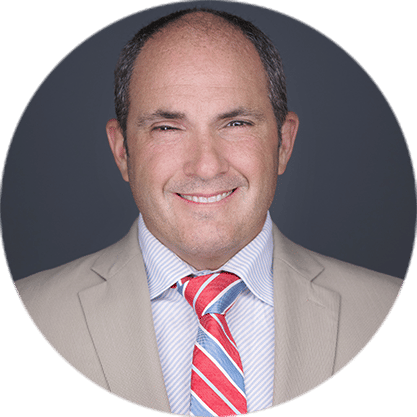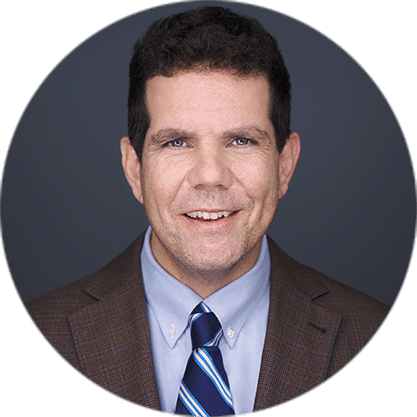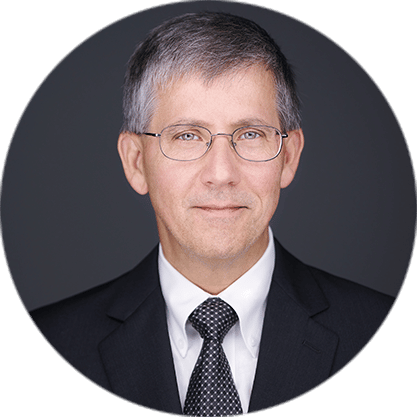



Ms. Bo Liu is an environmental chemist with more than 20 years of diversified experience in the field of environmental chemistry. Her expertise includes the application of advanced analytical chemistry methods for the study of the fate and effects of contaminants including PAHs, PCBs, dioxins, and pesticides/herbicides. Ms. Liu has managed many projects focused on aquatic and terrestrial environmental quality. Her strong understanding of and experience with environmental chemistry data allows her to routinely design and construct databases and employ GIS in 2-D and 3-D and conduct geostatistical and forensic analysis of both small and massive project datasets. She has worked on 100+ projects with a broad spectrum of database and GIS requirements ranging from bulk fuel storage facilities to the Gulf of Mexico 2010 Deepwater Horizon oil spill. Ms. Liu provided expert testimony surrounding the impact to sediments following NewFields investigation of the 2011 Bohai Bay oil spill, P.R. China. Ms. Liu has co-authored and contributed to numerous publications/presentations in scientific journals and books.
Credentials:
Research: Bo Liu – Google Scholar

Mr. Healey has over 25 years of experience in the field of environmental chemistry with a focus on the detailed chemical analysis and interpretation of data for all forms of organic contaminants. His research is particularly focused on the molecular-level characterization of petroleum, which he applies in assessing its nature and source(s) in the environment. His project experience includes service stations, pipelines, terminals and refineries, as well as other former and active industrial facilities.
Mr. Healey is fully trained in standard U.S. Environmental Protection Agency (EPA) and ASTM chemical analytical methods. He is particularly experienced in the forensic chemical analysis of gasoline and distillate fuels and the effects of regulatory history and environmental weathering on their compositions. In his capacity as a project manager, he routinely provides guidance to clients on the sampling and analytical plans appropriate for project objective(s) followed by technical oversight of all laboratory analyses. Mr. Healey’s experience allows him to subsequently assess project data quality, interpretation and provide interpretive reports to meet project/client objectives.
Credentials:
Research: Edward-Healey – Research Gate

Mr. Litman has more than 20 years of experience in the field of environmental science, with a specialization in applied environmental chemistry. Since 2010 he has been a consulting scientist at NewFields working in support of industrial clients, state agencies and the federal government. During this time, he has conducted a variety of environmental site investigations focused on the chemical characterization of petroleum hydrocarbons, fuel distillates, coal tar, PCBs, dioxins, heavy metals, chlorinated solvents, and poly fluorinated alkyl substances (PFAS). From 2010 through 2015 he served as a laboratory program manager for NOAA’s Deepwater Horizon NRDA. Mr. Litman also consults on CERCLA cases with a focus on designing cost allocation models and assessing the liabilities of cost allocation participants. He has worked in a variety of laboratory settings as both an analytical chemist specializing in hydrocarbon chemistry and as a laboratory manager. His research interests include environmental policy, the history of industrial chemistry, the optimization of analytical techniques and the development of novel methods to measure emerging contaminants.
Credentials:
Research:

Dr. Hu is the senior scientist in the NewFields Forensic Microscopy practice with capabilities to determine chemical fingerprints of visible and microscopical particulates with source-specific morphologies. This capability is particularly useful for distinguishing the origin of heavy metals and technologically enhanced naturally occurring radioactive material (TENORM) based upon morphological and compositional features. Past forensic microscopy projects determined the origin of contaminants attributed to anthropogenic fill, fly ash, slag, metallurgical wastes, lead- and PCB-containing paint chips, and wildfire debris using stereobinocular microscopy, polarized light microscopy (PLM), Fourier transformed infrared microscopy (FTIR), confocal Raman microscopy, scanning electron microscopy (SEM), transmission electron microscopy (TEM), energy dispersive X-ray spectrometers (EDS), wavelength dispersive spectrometers (WDS), electron microprobe analysis (EMPA), and others.
Over the past 15 years, Dr. Hu led numerous environmental (onshore and offshore) field sampling teams to support studies related to the fate of chemical contaminants in water, soil, marine sediments and ambient air systems. Dr. Hu was part of a multidisciplinary technical team that conducted water and marine sediment sampling after the PL193 oil release incident in Bohai Bay, China and worked on multiple project teams investigating domestic oil spills including the 2010 BP Deepwater Horizon blowout and fire. In addition, Dr. Hu’s understanding of environmental chemistry data has allowed him to design, build and manage complex environmental databases, often after compiling and homogenizing diverse historic datasets into a single, usable database for both 2-D and 3-D GIS-based analysis and communication.
Credentials:
Research: Gang Hu, PhD – ResearchGate

Mr. Desreuisseau has over 35 years of experience in the field of environmental chemistry with particular expertise in Environmental Database Management. His background includes detailed knowledge of the generation of environmental data ranging from sample collection through the final reporting of data. He has processed thousands of environmental samples throughout various roles as a laboratory sample preparation technician, instrument data analyst, quality control manager, project manager and database/LIMS manager. He has over 20 years of experience in gas chromatography and gas chromatography/mass spectrometry (GC/MS) analysis as well as data systems management. Mr. Desreuisseau’s experience in laboratory data collection is vital in performing detailed data validation and quality control checks of environmental chemistry data. He is also skilled in database design and maintenance of environmental data, specifically relating to the proper handling of environmental data often from disparate sources. Mr. Desreuisseau is also skilled at modifying MS Office products via Visual Basic Programming to efficiently move data from the database environment into formats easily handled by end users, as well as from the end user back into the database format. He has also designed procedures to validate electronic data deliverables (EDDs) as they are submitted to efficiently check for errors and/or omissions.

Dr. Douglas has over 35 years of consulting experience in the field of environmental forensic chemistry. He has investigated the nature, extent, fate, source(s) and/or age(s) of contamination in soils, sediments, water and biota at/near active and legacy facilities, urban waterways and marine/riverine oil spills. He has published (60+), presented and testified on the analysis, occurrence, distribution, and fate of persistent chemicals (e.g., PCBs, hydrocarbons, trace metals) in aquatic and terrestrial systems. Dr. Douglas routinely uses chemometric methods to explore complex chemical relationships among contaminated environmental samples and suspected sources and to track the fate of these compounds in contaminated environments. As a former laboratory director, he is highly knowledgeable of environmental laboratory operations and the issues relating to data usability and quality as it relates to forensic investigations. Dr. Douglas routinely provides forensic chemistry support for both industry and government clients on projects ranging from major US oil spills, ports and harbors legacy contamination issues, and soil/groundwater contamination disputes. He has testified in both U.S. and international courts (e.g., United Nations, Business International Tribunals) in support of this work.
Credentials:
Research: Gregory Douglas – Google Scholar

Mr. Hardenstine has over 25 years of experience in the generation and interpretation of chemical data for various forms of organic contaminant. Much of his work has focused on the molecular-level characterization of crude oil, refined petroleum products, and PCBs. He has designed and conducted benchtop and field weathering studies to assess rates and effects of physical and biological weathering on chemical fingerprints and contaminant mass.
Mr. Hardenstine has a strong background in environmental laboratory methods. He is fully trained in standard U.S. Environmental Protection Agency (EPA) chemical analytical methods but has also led efforts in tailoring standard methods for forensic applications. He is particularly experienced in sample extraction and clean-up techniques, especially in complex matrices (e.g., biological tissues) and regularly provides training, audits, and technical oversight to commercial and client laboratories in the US and overseas. He has designed and implemented novel laboratory studies of general relevance (e.g., analytical holding time studies for volatile and semi-volatile compounds) and project-specific relevance (e.g., bench scale weathering and treatability studies of petroleum under site-specific conditions). Most recently he has designed and conducted a study of, PCB congeners and Aroclors in sediments and paint chips.
Credentials:
Publications: Jeff Hardenstine – Google Scholar

Ms. Lawrence has over 30 years of experience in the environmental engineering industry as a regulator, consultant, and senior technical advisor for a major oil and gas company. Her expertise surrounds the development of robust site conceptual models which sufficiently identify and effectively mitigate risk pathways, while validating the integrity of data collected and analyzed. As a professionally registered geologist, she has extensive experience in due diligence activities; scoping and executing soil and groundwater site assessment efforts and implementing remediation system pilot testing, design, and operation & maintenance measures. She has a keen eye for ensuring strategies are technically feasible, economically viable, and environmentally sustainable, while also adept at communicating with stakeholders emerging issues that could stymie project progression. Ms. Lawrence has developed and led technical training courses to more than 2,000+ globally positioned personnel to improve knowledge transfer, promote advocacy, and drive consistent compliance with environmental policies and protocols.
Credentials:
Research: Jennifer Lawrence – Google Scholar

Katherine is a chemist with 15 years of experience in the field of environmental chemistry. She specializes in the characterization of sources and fate of contaminants in the environment, which in many instances requires an understanding of industry-specific, process chemistry to evaluate the potential nexus between historical and/or current operations and contaminants of potential concern (COPCs) such as PAHs, PCBs, metals, PCDD/Fs, CVOCs, and PFAS. Dr. DeMille is an expert in the reconstruction of such chemical processes including industrial operations at petrochemical plants, dye manufacturers, paper mills, pharmaceutical manufacturing facilities, and inorganic chemical manufacturing facilities. In addition, Dr. DeMille utilizes her advanced background in analytical chemistry and expertise in fundamental physical chemistry to elucidate the behavior and transformation of COPCs in air, water, soil, and sediments to better assess their source(s) and impact on the environment. She has provided technical consulting services to clients involved in the cost allocation process at Superfund Sites and has also participated in dozens of forensics investigations in support of liability management.
Credentials:
Research: Katherine F. DeMille – Google Scholar

Dr. Kelsey Rousteau is an environmental geochemist who specializes in oil, natural gas, and environmental plastic degradation. She has extensive experience in deep sea oil spills, natural hydrocarbon seepage, floating and sedimented microplastic debris, harbor contamination studies, salt flats, and peatland degradation. With 11 years of experience in environmental research, Kelsey has developed and applied techniques in the field and in the laboratory. Kelsey has experience on deep sea research vessels, collecting dissolved gas, particulate and sediment sampling, designing experiments in coastal areas, and running culture incubations testing for plastic degradation. Kelsey has specialized in using isotopic tracers to map out environmental systems and distinguish the incorporation of contaminants from background conditions. She also combines FTIR, microscopy techniques, heavy metals analyses, and spatial and statistical analyses to fully characterize a site, locale, or region. She has presented at numerous national and international conferences and published several scientific journal articles and textbook chapters.
Credentials:
Research:
Kelsey L Rogers – Google Scholar

Ms. Krahforst has over 35 years of experience in environmental chemistry specializing in analytical and forensic chemistry. Her main research focuses on characterizing the nature, extent and source(s) of organic contamination (i.e., petroleum products, manufactured gas plant (MGP) residues, and tar derived wastes) using advanced analytical methods and sophisticated chemometric data interpretation techniques. She has managed a variety of environmental investigations and has direct experience in petroleum characterization and identification.
Ms. Krahforst is trained in standard U.S. Environmental Protection Agency (EPA) analytical methodologies and is particularly experienced in the detailed forensic analysis of petroleum hydrocarbons and other anthropogenic contaminants by gas chromatography/mass spectrometry (GC/MS) and gas chromatography/flame ionization detection (GC/FID). Ms. Krahforst’s strong analytical background and broad experience is routinely applied in monitoring data quality and project-specific compliance for large, multi-year data collection efforts.
Credentials:
Research: Kerylynn Krahforst – Google Scholar

Dr. Mark J. Benotti is a multidisciplinary environmental chemist with 20 years of experience pertaining to projects focused on the occurrence, fate and transport, source attribution, impacts, and treatment strategies of/for environmental contaminants in the environment. He has managed or served as a technical advisor on projects in the United States and abroad involving per- and polyfluoroalkyl substances (PFAS), petroleum hydrocarbons, polycyclic aromatic hydrocarbons (PAHs), polychlorinated biphenyls (PCBs), dioxins, chlorinated solvents, 1,4-dioxane, and perchlorate. His work has included study design and characterization of sites impacted by industrial activities, firefighting training practices, wastewater and/or combined sewer overflows (CSOs), water reuse facilities/settings, sediment remediation sites, and other investigations of contaminated waters and sediments in complex, urbanized and/or industrialized environments. He has worked closely with risk assessors and toxicologists to incorporate aspects of environmental or human risk into interpretations of contaminant chemistry and behavior and with engineers to determine most appropriate water treatment strategies. As a scientist who has spent almost two decades working in environmental analytical chemistry laboratories, Dr. Benotti possesses a “cradle-to-grave” understanding of how to generate and interpret defensible data, and he has published over 30 peer-reviewed manuscripts, book chapters, and reports pertaining his research and project work.
Credentials:
Research: Mark J. Benotti – Google Scholar

Dr. Stout is an organic geochemist and leading practitioner in environmental forensics with more than 30 years of petroleum industry and consulting experience. His research on the chemical compositions of crude oil, refined fuels/products, natural gas, coal and its by-products (coal tar, creosote, ash) – as well as naturally-occurring and anthropogenic “background” (e.g., PAHs) – has provided a basis for scores of property management decisions, environmental liability allocations, and natural resource damage assessments (NRDA). He has investigated the nature, extent, fate, source(s) and/or age(s) of contamination in soils, sediments, water and biota: (i) at/near active and legacy facilities [e.g., oil fields/platforms/refineries; gas processing plants; fuel terminals/pipelines; service stations; railyards; manufactured gas plants; wood treatment plants; and integrated steel mills], (ii) in industrial/urban waterways [e.g., Elizabeth River (VA); Anacostia River (DC); Calumet River (IN), Thea Foss and Hylebos Waterways and Puget Sound (WA)] and (iii) following maritime oil spills [e.g., Deepwater Horizon, Murphy Oil (Hurricane Katrina), Refugio Beach, Taylor Energy, and Montara Platform (Australia)].
Dr. Stout has provided expert testimony in state, federal and foreign courts, authored or co-authored over 170 scientific papers and book chapters and co-edited three textbooks on the environmental forensic aspects of oil spills.
Credentials:
Research: Scott A. Stout, PhD – Google Scholar

Mr. Emsbo-Mattingly is an environmental chemist who specializes in the diagnostic measurement of petroleum, tar, combustion byproducts, preservatives, solvents, polychlorinated biphenyls (PCBs), heavy metals, and anthropogenic contaminants in solid, liquid, gas, and biological matrices. He offers extensive experience in oil spills, manufactured gas plants, chemical plants, wood treating facilities, tar and petroleum refineries, petroleum storage facilities, chlorinated solvent industries, chemical manufacturing facilities, and urban background. Over his more than 30 years in the environmental industry, Mr. Emsbo-Mattingly helped pioneer forensic methods for the identification and delineation of oil spills, tar releases, solvent plumes, PCB impacts, vapor intrusion, heavy metals, technologically enhanced naturally occurring radioactive matter (TENORM), and anthropogenic particulates. These projects often include detailed reviews of historical field and laboratory data, data quality assessment, statistical trend analysis, and plume deconvolution for site assessment, contaminant recovery, and liability management. He has published more than 100 articles, guidance documents, and textbook chapters and serves as reviewer for multiple journals and textbooks.
Credentials:
Research: Stephen Emsbo-Mattingly – Google Scholar

Dr. Trever Schwichtenberg is an environmental chemist with expertise in the analysis, fate, and transport of per- and polyfluoroalkyl substances (PFAS). He has developed methods for analysis of complex mixtures of PFAS in a variety of matrices including neat aqueous film-forming foam (AFFF), light non-aqueous phase liquid (NAPL), groundwater, landfill leachate, biosolid leachate, and surface water microlayers and foams. He has both executed and managed PFAS sampling events from a variety of sites across the United States for both target and emerging PFAS via nontarget and suspect screening. He contributes to current efforts to standardize suspect and nontarget PFAS screening within the environmental chemistry academic and commercial laboratory communities. He has worked on several DoD-funded projects on PFAS leading to presentations at numerous national and international conferences and multiple peer-reviewed publications.
Credentials: Ph.D., Analytical Chemistry, Oregon State University, 2022
M.S., Analytical Chemistry, Oregon State University, 2020
B.A., Chemistry, Luther College, 2017
Research: Google Scholar – Trever Schwichtenberg